- Our vision
- Our pipeline
- Our team
- Contact us
- Language

PB20* Target Overview
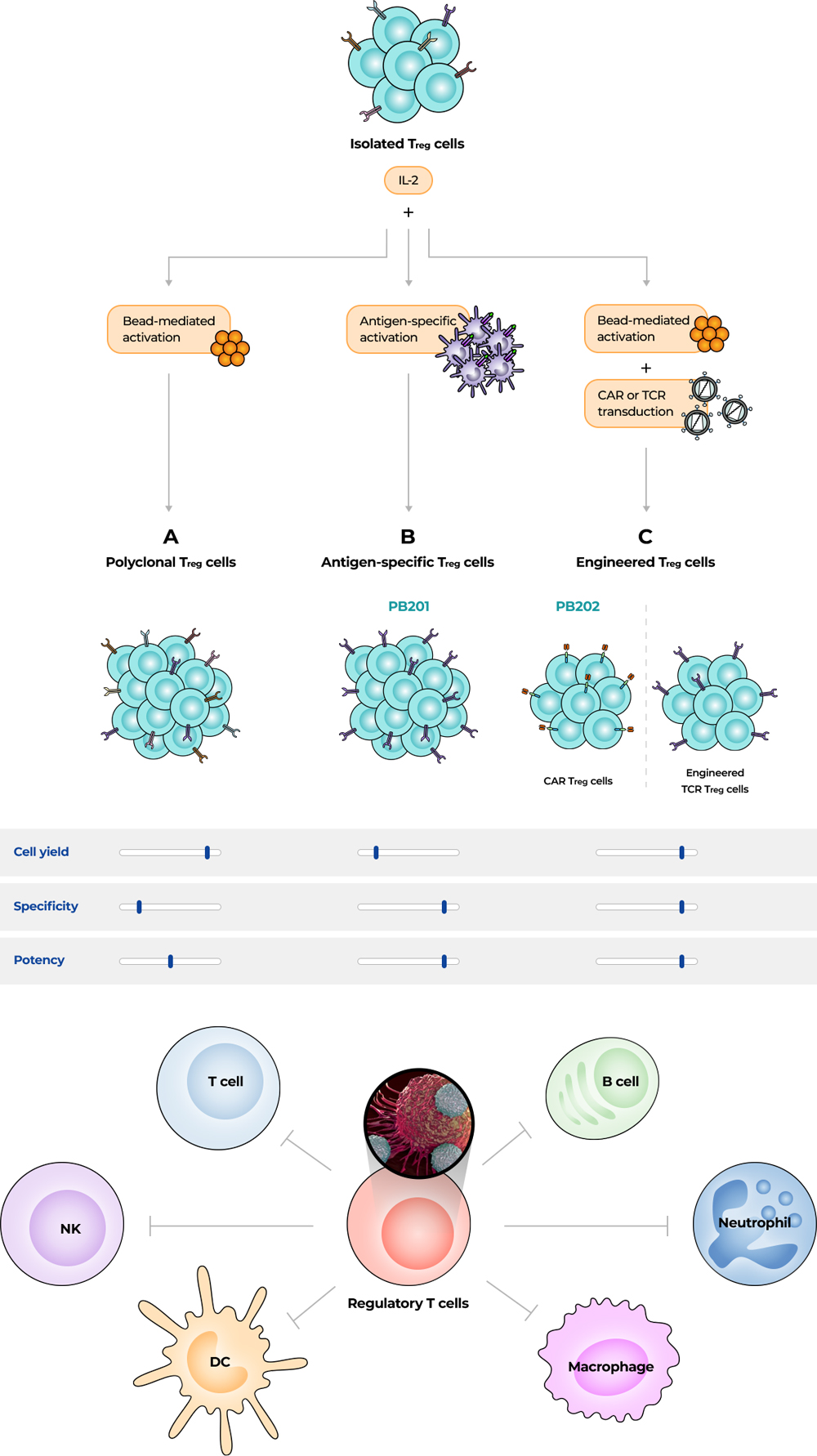
Regulatory T cells: Prevent autoimmune diseases by regulating the immune system and maintaining resistance to self-antigens

There are various ways to generate and expand antigen-specific Treg cells.
Our pipeline :
1. Endogenous antigen-specific Treg cells (stronger specificity than polyclonal Treg cells)
2. CAR (Chimeric Antigen Receptor)-Treg (Applicable to various autoimmune disease treatments by introducing a synthetic receptor called CAR)

The global T cell-based therapy market size is expected to reach $6.4 billion this year in 2021, and the average annual growth rate of the therapy is very high at about 20%, so the sales forecast for 2028 is estimated at $20.3 billion, about three times the size.
Distinctive advantage of PB201
GMP-Grade Proliferation
Process of Tregs
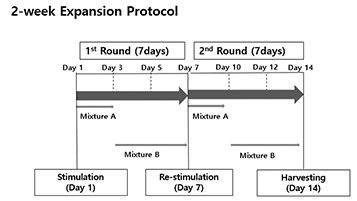
High proliferation efficiency compared to other foreign institutions
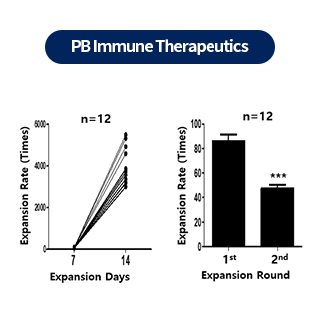
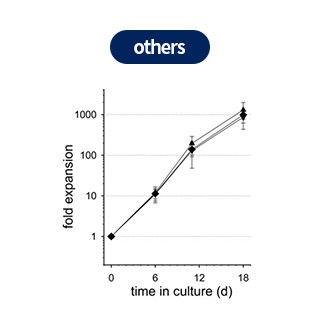
<Hoffmann P et al., Blood. 2006 Dec 15;108(13):4260-7. doi: 10.1182/blood-2006-06-027409.>
Registered a domestic patent related to Treg's GMP-Grade proliferation process
(Self-proliferation efficiency: about 3,000 to 5,500 times in 14 days >> other organ proliferation efficiency: about 1000 times in 18 days)
Problems of Treg therapies to be overcome: difficulty in Treg proliferation process
Our solution: Solve the problem of autologous monocyte shortage by securing a patent for Treg's GMP-Grade proliferation process
Overseas patent application and improvement patent application related to the patent are scheduled
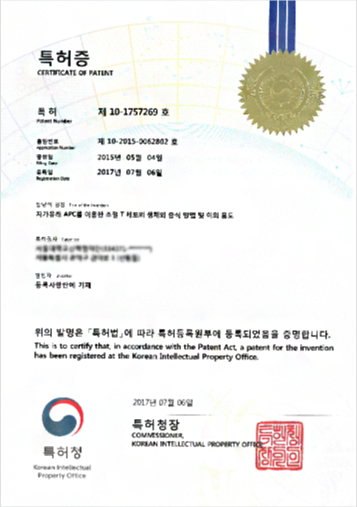
PB202, PB203
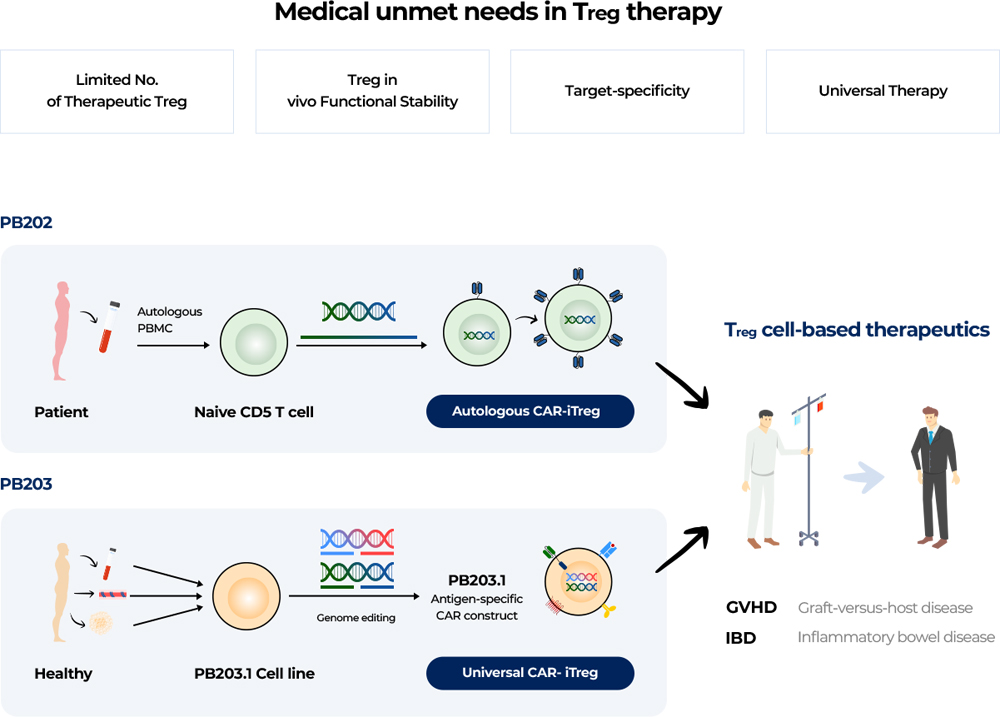
CAR (Chimeric antigen receptor): An artificial receptor containing the epitope (antigen binding site) of a monoclonal antibody (mAb), capable of recognizing all proteins expressed in target tissues without being restricted to antigens through engineering
CAR-Treg specifically binds to activated T cells to suppress their activation
Isolation of autologous-regulatory T cells from autoimmune patients and allogeneic-regulatory T cells from normal individuals → engineering and expansion of regulatory T cells for the treatment of target diseases → elimination of the root cause of disease through re-administration of regulatory T cells